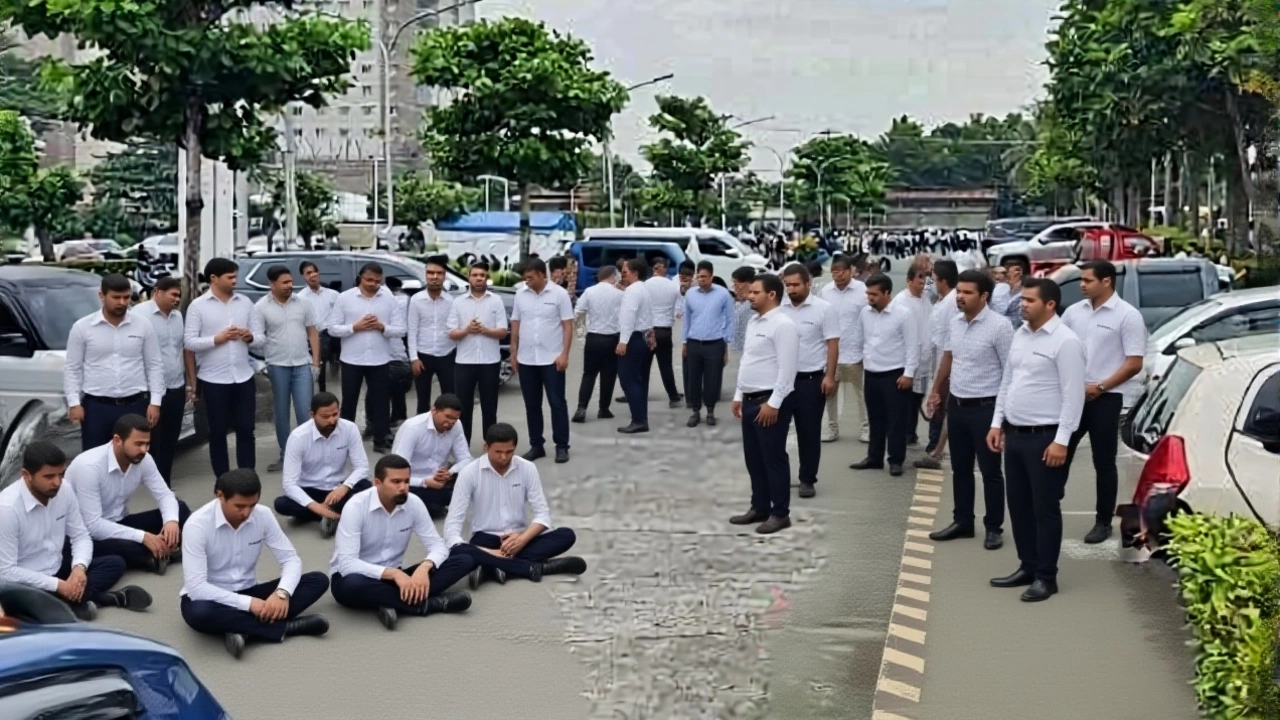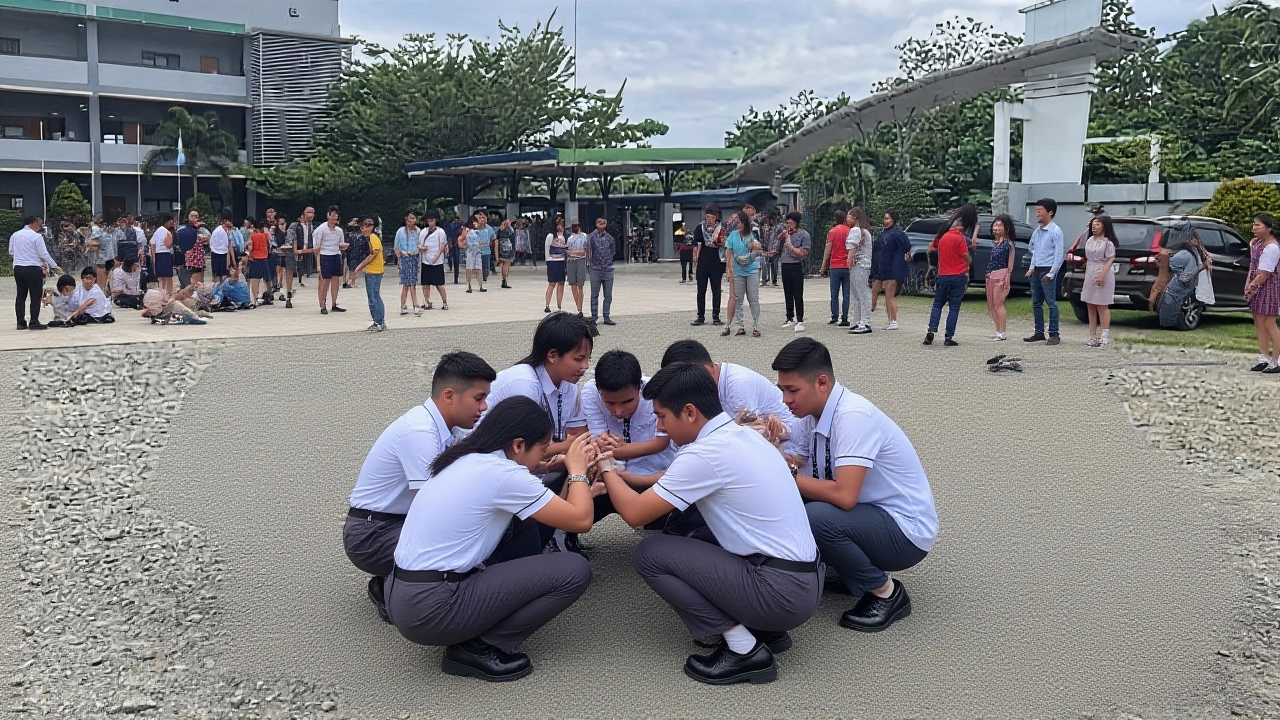
When the magnitude 7.4 earthquake struck offshore near Manay, Davao Oriental on , President Ferdinand Marcos Jr. immediately ordered the National Disaster Risk Reduction and Management Council (NDRRMC) to mobilise rescue teams, while the Philippine Institute of Volcanology and Seismology (PHIVOLCS) began issuing shake reports and a short‑lived tsunami alert. At least two people were confirmed dead, and several towns reported structural damage.
Background: The Philippines on the Ring of Fire
The archipelago sits atop the Pacific Ring of Fire, a horseshoe‑shaped belt of tectonic plates that produces roughly 90 % of the world’s earthquakes. Historically, the Philippines registers more than 200 detectable quakes each month, though most are low‑magnitude and occur offshore. In 2022 the country logged a deadly 6.3‑magnitude event in Luzon that claimed 23 lives, underscoring how vulnerable older buildings remain despite stricter seismic codes introduced in the late 1990s.
Details of the October 10, 2025 Quake
The tremor was recorded at a depth of about 10 kilometres, a shallow setting that amplified ground shaking on nearby coastlines. PHIVOLCS listed the epicentre as 15 km east of Manay, a modest fishing municipality in the southeastern part of Mindanao. The shaking lasted roughly 30 seconds, enough time for fire trucks in Panabo City to sway and for residents in Butuan City to rush to open spaces.
- Magnitude: 7.4 (Richter scale)
- Depth: ≈ 10 km
- Epicentre: Offshore near Manay, Davao Oriental
- Casualties: 2 confirmed dead, dozens injured
- Tsunami alert: Issued for a 300‑km radius, lifted within hours
Authorities issued a brief tsunami warning just after the quake, prompting coastal villages from Davao Oriental to Davao del Sur to evacuate to higher ground. The alert was lifted after PHIVOLCS determined that sea‑level changes were negligible.
Immediate Response and Rescue Efforts
Within minutes, the NDRRMC activated its emergency operations centre in Davao City. “We are deploying task forces to assess structural integrity of schools, hospitals and critical infrastructure,” said Senior Disaster Officer Carlos Martinez, speaking on a live radio broadcast. Teams from the Armed Forces, the Philippine Coast Guard, and local barangay (village) volunteers began clearing debris and searching for survivors.
In Manay, a collapsed two‑story nipa house trapped a family of four. Search‑and‑rescue dogs located two unharmed members, while the remaining two were rescued by a helicopter crew from the Air Force. The incident highlighted the stark contrast between newer, reinforced constructions and older, timber‑frame homes that failed to withstand the tremor.
Impact on Communities and Infrastructure
Beyond the tragic loss of life, the quake rattled power lines, causing blackouts in parts of Davao Oriental and the neighboring province of Surigao del Sur. Water supply in Panabo City was briefly interrupted as pipe networks shifted under the strain. Teachers reported cracked walls in several elementary schools, prompting NDRRMC to declare them unsafe until engineers could certify their stability.
Local businesses suffered as market stalls toppled, and the region’s already‑fragile tourism sector braced for a dip in visitors. “We lost a day’s worth of sales, and the damage to our stalls will take weeks to repair,” lamented Maria Santos*, a market vendor in Panabo City.

Expert Analysis and Future Risks
Seismologist Dr. Liza Tan of the University of the Philippines Mindanao explained, “A quake of this magnitude, shallow depth, and proximity to the coast is a textbook scenario for triggering a tsunami, even if the waves turn out small. The real danger lies in aftershocks, which can be as strong as 6.0 and will keep testing weakened structures.”
PHIVOLCS warned that a series of strong aftershocks could continue for several days, urging residents to keep emergency kits ready and to avoid re‑entering damaged buildings without clearance. The agency also reminded the public that the Philippines experiences roughly one magnitude‑7 event every 4‑5 years, a frequency that demands continual upgrades to building codes and disaster preparedness drills.
What Comes Next?
President Marcos Jr. has pledged ₱2.3 billion in emergency funds to accelerate repairs of schools and health facilities in the affected provinces. The NDRRMC plans to conduct a comprehensive damage assessment over the next two weeks, after which a reconstruction roadmap will be released.
In the meantime, community leaders are organising temporary shelters in schools and churches, while NGOs such as the Red Cross distribute food, blankets and first‑aid kits. Residents are urged to stay informed via official PHIVOLCS updates and to report any new cracks or structural concerns to local barangay officials.
Frequently Asked Questions
How does the quake affect daily life in Davao Oriental?
Power outages, intermittent water supply and damaged roads have forced many households to rely on generators and bottled water. Schools remain closed for safety checks, and market vendors are repairing stalls before resuming trade. The disruption is expected to last at least a week, depending on repair progress.
What caused the brief tsunami alert?
The quake’s shallow depth and offshore epicentre prompted PHIVOLCS to issue a precautionary alert for a 300‑kilometre coastal radius. Subsequent sea‑level readings showed no significant rise, so the alert was lifted within a few hours.
Are there any lessons from the September 2025 Cebu earthquake?
Both events exposed the vulnerability of older buildings that pre‑date modern seismic standards. Cebu’s tragic loss of 74 lives spurred stricter retrofitting guidelines, a policy now being accelerated in Mindanao to minimise casualties in future quakes.
What should residents do during aftershocks?
Drop, cover, and hold on. Stay away from windows and exterior walls, and avoid re‑entering structures that show new cracks until engineers give the all‑clear. Keep emergency kits handy with water, food, a flashlight and a radio.
Will the government provide long‑term rebuilding assistance?
Yes. The president’s emergency fund of ₱2.3 billion will cover immediate repairs, while a separate reconstruction plan, expected to be unveiled within a month, will address longer‑term housing and infrastructure upgrades.

Write a comment